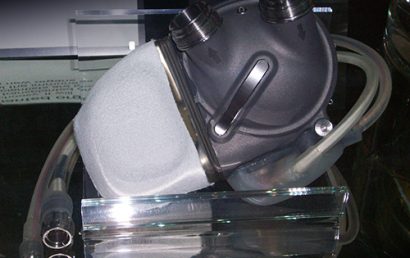Understanding Industrial Coatings That Provide Corrosion Resistance
What is one of the biggest scourges of infrastructure and industry? Answer: corrosion. Throughout the United States, every year, it costs billions of dollars. The country’s economy suffers, and our most important private and public assets are put at risk. Think pipelines, tunnels, bridges, and more.
While there are numerous solutions that can be put into place, it’s important to consider what is best for the environment and for a company’s assets. With industrial coatings for corrosion resistance and improved management practices, corrosion costs can be cut somewhere between 25% and 30%… or even more.
Let’s take a look at what kinds of assets are placed at risk by corrosion and its most common types. Based on precise conditions, there are effective preventative measures that can be taken.
Corrosion – Common Types
When metal is exposed to the atmosphere, the metal surface tends to naturally degrade. This is referred to as corrosion. It causes rust to form because the iron has contacted moisture and oxygen. Slowly, the metal is worn away.
Different types of corrosion exist, however. These include two categorizations: localized corrosion and generalized corrosion.
Localized corrosion, even with protective measures, can occur and is difficult to detect. Localized corrosion types most commonly seen are as follows:
- Lamellar corrosion
- Galvanic corrosion
- Pack rust
- Filiform corrosion
- Crevice corrosion
- Pitting corrosion
Also referred to as uniform corrosion or general attack corrosion, generalized corrosion causes relatively uniform material thinning and appears over the surface. When protective coating systems break down, this frequently occurs. It is treatable, predictable, and detected easily. Therefore, ordinarily, only minor issues are caused by generalized corrosion. Unfortunately, if permitted to progress, it can lead to more serious problems and types of corrosion.
Resistant Coatings Help Prevent Corrosion
Take a good look at the conditions your assets endure. This will help you determine which corrosion prevention method is most appropriate. Affecting the pace of corrosion are elemental factors such as the following:
- High temperatures
- Oxygen
- Chemical salts
- Humidity
- Acid rain
Among the most cost-effective and reliable corrosion prevention methods are corrosion resistant coatings. To battle corrosion, the following strategies can be used.
Barrier Coatings
When most people hear the words “industrial coatings”, these probably come to mind. They are barrier coatings, and, from a substrate, they keep out moisture and oxygen. In this manner, they protect it from soluble salts and other harmful chemicals.
For a barrier coating, the most important properties are as follows:
- For an even, smooth film build, strong wetting properties.
- Even in moist conditions, strong adhesion.
- Resist minor impacts and vibration.
- Resist moisture.
- Offer surrounding chemical environment resistance.
Sacrificial Coatings
Where primers are concerned, these perform superbly. Applied directly to the assets, they’re typically a very thin layer of zinc, nickel, or some other metal. Compared to other sacrificial coatings, zinc in particular corrodes preferentially to the asset which leads to longer intervals between re-coatings.
How do these coatings work? When coated with a topcoat barrier system, they effectively fight corrosion because they sacrifice themselves before allowing the surface upon which they are applied to corrode.
A&A Coatings for Corrosion Prevention
A specialist from A&A Coatings can help determine which anti-corrosion coating would best suit your needs. They will take into consideration the environment, usage, and more.
Contact us today if you’d like to find out how our coatings can help your business and, more than likely, is already being used in your industry.



